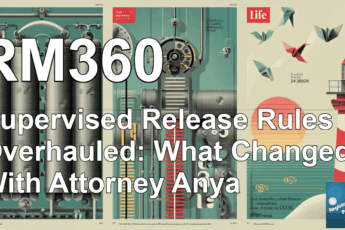Introduction
The American legal system prizes certain principles above all else—among them, the right of the accused to confront their accuser in a court of law. This right, enshrined in the Sixth Amendment, isn’t just a relic of the past; it shapes the very foundation of fair criminal trials today. But what happens when upholding this right collides with another critically important goal: protecting vulnerable witnesses—particularly traumatized children—from potentially devastating courtroom experiences?
This tension is at the heart of a constitutional debate currently unfolding in Iowa. State lawmakers have advanced a proposal to amend Iowa’s constitution, aiming to address what some see as an “interesting conundrum”—balancing the accused’s confrontation rights with the protection of children and vulnerable witnesses. The issue goes beyond Iowa, touching on larger questions of legal tradition, evolving courtroom technologies, and the interests of all parties in the pursuit of justice.
In this article, we’ll unpack:
– What the Confrontation Clause is, and why it’s a cornerstone of American criminal justice
– The recent Iowa Supreme Court decision that triggered the state’s constitutional debate
– Arguments from both sides—proponents of witness protection, and defenders of the right to confrontation
– National context and relevant Supreme Court precedents
– The broader implications for justice, legal practice, and legislative change
Understanding the Confrontation Clause: A Legal Pillar
At the core of this debate is the Confrontation Clause, found in the Sixth Amendment to the United States Constitution. Here’s what it says:
“In all criminal prosecutions, the accused shall enjoy the right…to be confronted with the witnesses against him.”
This clause guarantees that individuals charged with crimes have the opportunity to face, question, and cross-examine witnesses who testify against them. The principle aims to safeguard against wrongful convictions by allowing the defendant’s counsel to expose inconsistencies, biases, or falsehoods through direct scrutiny.
It’s a right cherished by legal luminaries across the ideological spectrum. The late Supreme Court Justice Antonin Scalia, known for his textualist approach to constitutional interpretation, was a staunch defender of this clause. He believed its original intent demanded an in-person, face-to-face confrontation—something the founders would have seen as essential.
Yet in today’s society, as our understanding of trauma evolves and new technologies emerge, the notion of “face-to-face” confrontation has become more complicated.
The Iowa Amendment Proposal: Origin and Content
So, why is this issue flaring up in Iowa now?
It stems from a 2023 Iowa Supreme Court decision that interpreted the state’s constitution as requiring direct, in-person testimony in criminal trials—including for children and other vulnerable witnesses. This interpretation meant remote testimonies via closed-circuit video or similar technology, sometimes used to spare traumatized victims from direct contact with their alleged abuser, were insufficient under Iowa law.
Iowa’s Attorney General Brenna Byrd and other proponents argue that this interpretation leaves the state nearly alone nationwide and imposes unnecessary hardship on children who have survived abuse. In response, the legislature has pushed forward a proposed constitutional amendment that would specifically allow protected witness testimony outside the immediate presence of the accused, in cases involving traumatized youth or adults with certain disabilities.
If successful, this amendment would:
– Permit testimony from vulnerable witnesses remotely or shielded, upon judge approval
– Initially apply to minors and people with significant mental or intellectual disabilities
– Still require multiple rounds of legislative and public approval before taking effect (possibly by 2028)
Why Does Confrontation Matter? Original Intent vs. Modern Realities
At the heart of the confrontation debate are two deeply held beliefs about justice.
- The Traditionalist View:
– The right to confront your accuser is a foundational safeguard.
– As Andy and Larry (the podcast discussants) highlight, legal originalists like Justice Scalia insist on interpreting the Constitution as its framers intended. In their time, testimony meant standing face to face in a courtroom. Allowing remote or shielded testimony, the argument goes, dilutes the integrity of cross-examination and may undermine a defendant’s ability to expose the truth. - The Evolving View:
– Modern society recognizes the severe trauma some witnesses—especially children or abuse victims—experience simply by appearing in court with their alleged abuser.
– Keeping children safe, and willing to testify, is essential for prosecuting serious crimes, as otherwise young victims may not come forward, or their parents may decline to pursue justice for fear of further trauma.
As one Iowa child advocate told lawmakers:
“Is the price of justice worth it for my child? Unfortunately… the answer is they often have is no.”
This conflict isn’t unique to Iowa. Courts and legislatures across the country have grappled with the right balance.
Case Law and National Trends: Maryland v. Craig and State Approaches
One of the most influential Supreme Court rulings on this subject was Maryland v. Craig (1990). The Court ruled that a state could allow a child abuse victim to testify out of the defendant’s physical presence—using a one-way closed-circuit television—if testifying in court would result in serious emotional distress for the child.
Key elements of the Craig ruling:
– Face-to-face confrontation is a preference, not an absolute right.
– Remote testimony can suffice if necessary and reliable.
– The state’s “interest in protecting [child] witnesses from the trauma of testifying” can justify departing from in-person confrontation, with proper safeguards in place.
Since that ruling, a majority of states have followed suit, allowing limited exceptions to physical confrontation, particularly when statutes specifically reference “face-to-face” requirements or when dealing with vulnerable witnesses.
However, some state constitutions provide even stronger confrontation protections than the federal baseline. For example, New York and New Hampshire courts have struck down remote testimony for children, reasoned that the explicit requirement for “face-to-face” confrontation in their state constitutions carries extra weight.
Arguments From Both Sides: Justice for Whom?
In Favor of the Amendment:
– Protecting the Vulnerable: Proponents argue that demanding in-person confrontation in all cases retraumatizes victims and could deprive justice to those most in need—children terrified to face abusers.
– Victim Advocacy: Law enforcement and victim advocacy groups emphasize that the system currently pressures families to choose between pursuing justice and preserving their children’s mental health.
– Flexibility and Modernization: With modern technology, reliable remote testimony is feasible and—done properly—can still allow for robust cross-examination by defense attorneys.
Against the Amendment:
– Slippery Slope Concerns: Defense attorneys warn that creating carve-outs for confrontation rights could steadily erode other essential rights, such as the right to present a defense.
– Jury Perception: Allowing special procedures for certain witnesses may subtly signal to juries that the defendant is dangerous or guilty, undermining the presumption of innocence.
– Potential for Wrongful Accusations: Removing direct confrontation, critics say, could make it easier for false or mistaken allegations to go unchallenged.
As Chris Welborn, president of the National Association of Criminal Defense Lawyers, cautioned:
“When you start saying we carve out exceptions for someone’s confrontational rights, do we also carve out exceptions for the right to present a defense?”
Even some Republican lawmakers have expressed reservations, calling the approach a “slippery slope” and warning that future legislatures could further erode constitutional rights under the guise of protecting witnesses.
What’s Next for Iowa: A Long Road and High Stakes
The proposed amendment’s journey is far from over. For the Iowa Constitution to be changed, the measure must pass the legislature again in 2027 and 2028, before it’s placed on the ballot for a public vote in November 2028. That gives both advocates and opponents time to organize, educate, and campaign.
In the meantime, Iowa is operating under a system stricter than most states, where only in-person testimony by all witnesses satisfies the Constitution. Child advocates warn this could dissuade prosecution in abuse cases, while defense attorneys argue it preserves a vital safeguard for the accused.
Broader Implications: Justice in a Changing World
At its heart, the Iowa confrontation debate is about more than just courtroom procedures. It raises profound questions about:
– **How constitutional rights evolve—or should evolve—as society and technology change.
– The balance between individual rights and collective interest in justice and public safety.
– Who justice ultimately serves: the accused, the victim, or the system as a whole.
It also reflects perennial legal tensions: originalism versus “living constitution” interpretation, the role of courts versus legislatures, and the challenge of writing laws that protect both the vulnerable and the accused.
Conclusion: Walking the Tightrope Between Rights and Protections
There are no easy answers in Iowa’s confrontation clause debate. Both sides raise compelling arguments, and both seek a justice system that is fair, humane, and effective. As legislators and voters weigh how best to move forward, Iowa may well set a precedent for other states facing similar dilemmas.
Justice Antonin Scalia insisted that confrontation meant seeing your accuser face-to-face—a stance rooted in tradition and textualism. Advocates for vulnerable witnesses highlight the trauma and fear that in-person testimony may inflict on children and other at-risk individuals. As courtroom technology and societal awareness advance, courts and lawmakers must continue to grapple with what justice, in practice, really requires.
Actionable Takeaways
- Engage in Civic Discourse: If you live in Iowa, learn about the proposed amendment and voice your concerns or support to your representatives. The measure’s final fate lies with the voters.
- Educate Yourself on Rights: Whether you’re a lawyer, advocate, or everyday citizen, understanding the balance between confrontation rights and witness protections is crucial for informed participation in the justice system.
- Support Trauma-Informed Justice: Even as we defend the rights of the accused, advocate for courtroom procedures and resources that recognize—and minimize—the trauma experienced by vulnerable witnesses.
As the Iowa debate shows, the fight to balance tradition and progress is ongoing. Justice demands that we keep these conversations alive, ensuring both the accused and the abused receive their day in court—and their fair share of protection under the law.



Leave a Comment